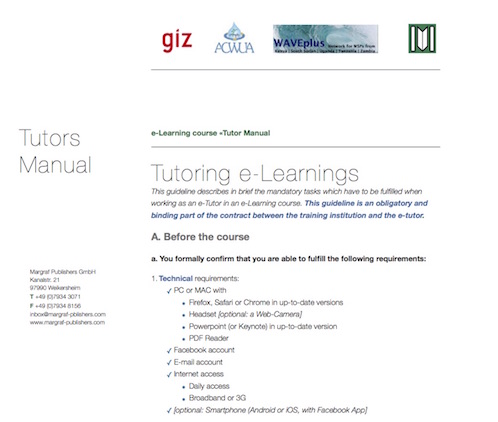[Ce cours est actuellement disponible uniquement en anglais – la description est donc aussi en anglais. Une traduction en français est en préparation]
This training course is a typical example for a «Blended Learning». 10 online-lessons will lift the participants to a common level; interactive exercises help the trainers to gain experience in conducting an e-Learning course.
After the online phase, the most committed participants are invited to a face-2-face training which will them make familiar with their tasks and the duties of an organization which will implement an e-Learning [see column on the right for some standard procedures – examples from ToT courses in the past].
Trainings are on invitation and for experienced trainers only.
Cooperative Learning Approach
The concept of this training course is that the participants will be acting in two different roles: on one hand as a student who learns about the basic activities of e-learning; on the other hand as a trainer who helps participants by answering their questions and by moderation online tools and the group discussion. Participants change between these two roles in the course of this online training. The courses objective is therefore to enable trainers to work as a online tutor and to provide him/her with as many experiences as possible.
Language, Target group & Certificates
The online course is currently available in English only, while the face-to-face phase is in any needed language. Right now, these trainings are provided in German, English and French.
The e-tutors should be familiar with moderation and facilitation of trainings and workshops in general. It is also strongly expected that the trainers know how to access the internet and how to overcome simple net-connection problems on his/her own. Trainers might consider it helpful to participate in another existing e-Learning course as a participant before taking part here.
Successful participants receive an electronic certificate which entitles to work as an e-tutor.
Le cours comprend un total de 10 lessons d'eLearning en tant que préparation et pour s'assurer que tous les participants ont des connaissances similaires. Voici une formation en classe pour accéder à d'autres détails et à des répétitions pratiques. Le contenu de la formation en face-à-face dépend des besoins de connaissances identifiés et des cours, les formateurs sont supposés mettre en œuvre par la suite.
La table de contenu (part en ligne pour eTutors) est disponible ici:

